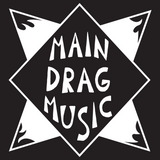Description
Images coming soon. w/ original box.
From Keeley:
As you probably know, we’re fans of the Boss DD-3 here at Keeley Electronics, particularly when subjected to our own set of modifications. Many of the Keeley modified DD-3s replace the stock Direct Output with an effects loop that allows the player to add additional effects to the repeats, opening up a new pallet of sounds.
Additionally, we augment the DD-3 with a 3 Way switch offering two settings that better emulate the sound of analog delays, an “Analog Feel” switch — reducing the treble in the repeats, thus softening up the sound of the delayed signal to recreate the signal loss inherent in bucket brigade style and tape delays. The first setting offers a gentle roll off, the second a bit more, approaching the sound of tape delay but without the wow and flutter associated with the effect. The center position bypasses the EQ capacitors, returning the DD-3’s stock sound, producing full bandwidth repeats.
http://en.wikipedia.org/wiki/Bucket-brigade_device
In thinking about the DD-3, and other digital pedals, it’s important to realize that the signal path required to create the effect requires passing signal first through an Analog to Digital converter (A/D), through whatever digital process the device supports, and then back out via the pedal’s Digital to Analog convertor (D/A). There’s a lot more going on under the hood of the DD-3, including a pre-emphasis/de-emphasis circuit. The pre-emphasis section adds treble before the delay circuit, while the de-emphasis circuit reduces the treble by the equivalent amount, thus reducing the amount of noise added by the effect.
You’re probably wondering what that sounds like and, since the DD-3 isn’t a candidate for a true bypass modification, the best demonstration would be to hook the DD-3 up to a Keeley True Bypass Looper and compare the sound of the pedal (with the effect off) to the sound of your guitar run direct to the amp. The DD-3 doesn’t sound bad per se, and the sonic tradeoff is well worth the effect it produces when engaged, but our casual observation is that it produces a slightly brittle sound when in the chain with the effect turned off.
How much of the DD-3’s sonic degradation can be attributed to digital conversion? That’s a complex subject and, while A/D & D/A conversion is something of hot topic in the recording world, we find this test by Mix Engineer Chuck Zwicky (Soul Asylum, The Rembrandts) in which he processed sounds through 60 generations of A/D & D/A quite interesting.
http://www.zmix.net/Converter_Test/index.htm
One thing is certain though— analog and digital pedals each have a niche to fill in the stomp box world. Digital reverbs open up soundscapes that didn’t exist in the analog realm, while analog overdrive remains the best solution around for, well, distortion.
The effects loop of the DD-3 mod is where a player’s creativity can run wild. This is where you take any old phaser, chorus, or flanger you have laying around and connect it to the loop. Now your 2nd, 3rd, 4th, etc. repeats are processed through the loop. Now many of the analog tape effects can be added in a new way to your trusty DD-3. Drive pedals can even be used to “brown” the sound, but be careful to always make sure the drive pedal’s volume level is set for less than unity gain as any boost in the effects loop will result in run-away feedback. One of the easiest and best sounding things is just a cheap chorus pedal in the loop. Sounds terrific!
Payment & Security
Your payment information is processed securely. We do not store credit card details nor have access to your credit card information.


